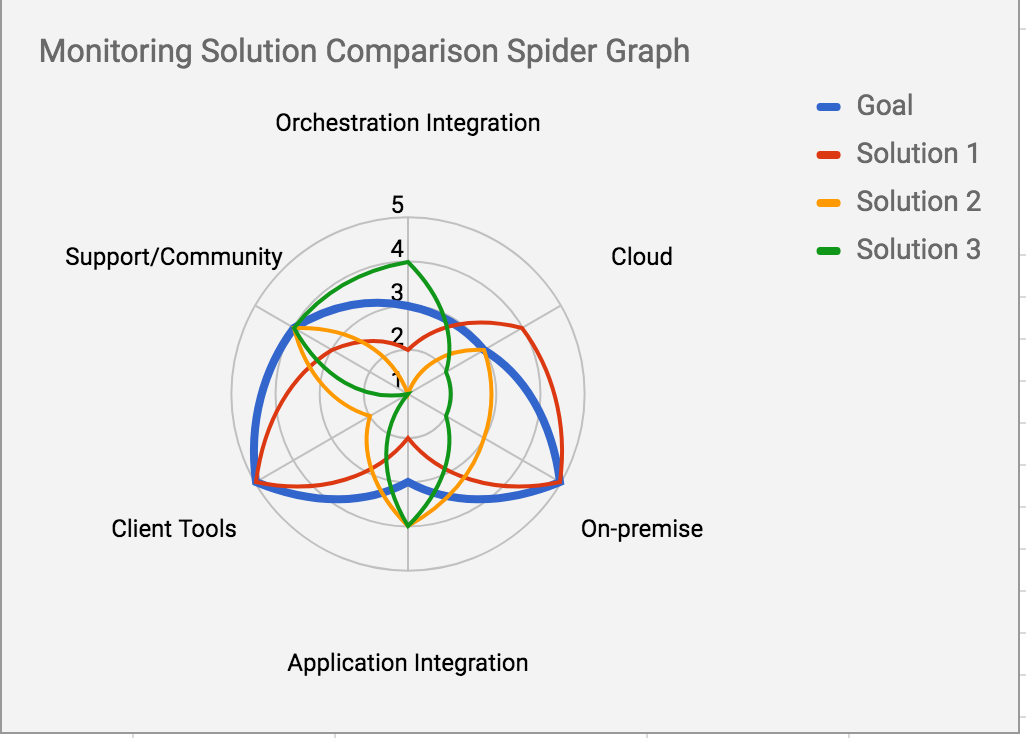Introduction to Container Monitoring
Discover the essentials of container monitoring, including key metrics, tools, and setup steps. Learn how to ensure the performance and reliability of your containerized applications with effective monitoring strategies.

Containers make our lives easier in countless ways, from development to production to making the world a better place. How do containers make the world a better place?
Happy Developers = Happy Life
However, containers introduce entirely different considerations compared to pre-container modes of operation. Monitoring containers is an entirely different beast. Let's take a look at why monitoring containers are different.
What's Different about Monitoring Containers?
You have now created and deployed a couple of containers. Now what? Should I install a monitoring agent inside my container to see what's going on?
NO! One of the many benefits of containers is the size of the deployed container. We only install what we need inside the container to allow our applications to run. Nothing more, nothing less.
Containers live a much shorter life than a VM. According to the latest DataDog Container survey, the average lifespan of a container is 2.5 days. With such a high rate of change, it is important that our monitoring software doesn't stand in the way of the speed at which we change our applications.
Additionally, containers have made it very easy to scale applications from 1 to the moon and back blazingly fast. We want to view our application as it changes state and where exactly all the instances of the application are running.
Monitoring should be able to cope with these changes and track our application as it scales up and back down.
Monitoring Containers
The monitoring of containers is agentless. That is, we don't install monitoring agents inside of containers.
Typically, we monitor containers by running monitoring software in an additional container beside the container workload on every host. These monitoring containers now report on both the host machine and the containers.
At this point, many people scratch their heads in confusion and ask, "How can another container monitor the host and containers running on the host?"
Most monitoring containers mount the root filesystem from the host into the container. By mounting the root filesystem into the container, the monitoring application updates when a new process changes states from start to stop or vice versa.
Why are we watching processes and not containers? Containers are processes, which is the magic element of monitoring containers. Monitoring container applications transforms into statistics by knowing when a process starts and the association between the process and the application.
Which Monitoring Solution is Best for Me?
Choosing the right monitoring solution is more than choosing open source vs. commercial offerings.
Some things to consider when selecting a solution are whether the solution integrates with your Container Orchestrator, is cloud-based, runs on-premise, application integrations, client tools, and how the community and support are for the solution. Each of these topics can be the decisive factor in choosing a solution or not.
I authored each of these points for The New Stack's Free e-book Monitoring & Management with Docker Containers.
To better assist your decision process I have created a Monitoring Solution Spider Graph Google Spreadsheet to help visualize your goal versus the different offerings.
Monitoring Solution Spider Graph Instructions:
Values range from 1 (least important) to 5 (most important)
- The Monitoring Goal row is the baseline for each category
- Fill in the names in Column A with the monitoring solutions to compare
- Asses the features of the different solutions with the Spider Graph
- Compare Goal baseline values with the different solutions
Once the chart is complete, you can visualize the Monitoring Solution Spider Graph comparison.

FAQ Section: Introduction to Container Monitoring
What is container monitoring, and why is it important?
Container monitoring involves tracking the performance and health of containerized applications and their underlying infrastructure. It is crucial because it helps you ensure that your containers are running efficiently, detect and resolve issues quickly, and maintain the reliability and performance of your applications. Monitoring provides visibility into resource usage, application behavior, and system health, which is essential for managing complex, dynamic container environments.
What are the key metrics to monitor in containerized environments?
In containerized environments, key metrics to monitor include CPU and memory usage, disk I/O, network traffic, container uptime, and resource limits. Additionally, monitoring application-specific metrics like response times, error rates, and throughput can provide deeper insights into the performance of your services. These metrics help you understand how well your containers are performing and where optimizations may be needed.
What tools can be used for container monitoring?
Several tools are available for container monitoring, including Prometheus, Grafana, Datadog, and cAdvisor. Prometheus is a popular open-source tool for collecting and querying metrics, while Grafana is used for visualizing these metrics on customizable dashboards. Datadog offers a comprehensive monitoring solution with built-in support for containers, and cAdvisor provides detailed insights into container resource usage. These tools can be integrated to create a robust monitoring setup.
How do I set up basic container monitoring?
To set up basic container monitoring, you can start by deploying a monitoring tool like Prometheus and configuring it to scrape metrics from your containers. You’ll need to expose metrics from your containers using an exporter or by enabling a metrics endpoint. Once Prometheus is collecting data, you can visualize it using Grafana by connecting it to your Prometheus instance and creating dashboards to monitor the key metrics of your containerized environment.
What challenges might arise with container monitoring, and how can they be addressed?
Challenges in container monitoring include managing the dynamic and ephemeral nature of containers, handling large volumes of data, and ensuring that monitoring setups scale with your infrastructure. These can be addressed by using scalable monitoring tools like Prometheus, implementing proper metric aggregation and filtering, and utilizing orchestration tools like Kubernetes to help manage the dynamic aspects of containerized environments. Automating monitoring configurations and continuously refining alerting rules are also crucial for effective container monitoring.
Follow me
If you liked this article, Follow Me on Twitter to stay updated!



